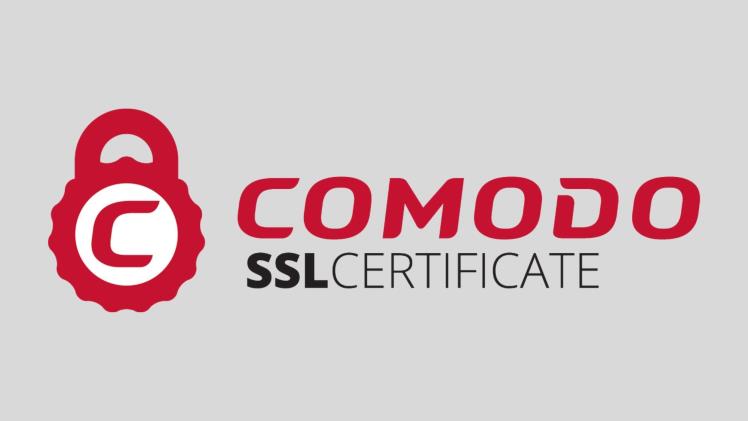Tips and Tricks for Mastering Lightroom Pro APK Like a Pro
Professional mobile photo editing demands more than basic knowledge of adjustment sliders and filters. Adobe Lightroom Pro APK offers sophisticated tools that rival desktop editing suites, but mastering these capabilities requires understanding advanced techniques that separate amateur edits from professional-grade results. Whether you’re a seasoned photographer transitioning to mobile workflows or an enthusiast seeking to elevate your editing skills, these expert strategies will transform your approach to mobile photo editing.
Mastering Custom Preset Creation
Building Your Signature Style
Custom presets represent the foundation of efficient professional workflows. Rather than recreating complex adjustments for each image, develop signature looks that define your photographic style. Start by identifying the common characteristics in your best work – perhaps you favor warm skin tones, lifted shadows, or specific color grading treatments.
Create your base preset using an image that exemplifies your desired aesthetic. Begin with fundamental adjustments like exposure, contrast, and vibrance before moving to specific color treatments. The key lies in subtle adjustments that enhance rather than overwhelm the natural characteristics of your images.
Name your presets descriptively – “Portrait Warm Golden Hour” or “Landscape Moody Blues” – making them easily identifiable during busy editing sessions. This systematic approach eliminates guesswork and maintains consistency across your portfolio.
Advanced Preset Techniques
Professional preset creation goes beyond basic color adjustments to include lens corrections, noise reduction settings, and sharpening parameters. These technical elements ensure your presets work consistently across different shooting conditions and camera systems.
Incorporate graduated adjustments within your presets using linear filters to create natural vignettes or sky enhancements. These built-in local adjustments save significant time during individual image processing while maintaining the flexibility to modify intensity based on specific image requirements.
Create preset variations for different shooting scenarios. Your portrait preset might include versions for indoor natural light, outdoor shade, and artificial lighting conditions. This comprehensive approach ensures consistent results regardless of shooting environment while reducing post-processing time.
Organizing Your Preset Library
Effective organization transforms your preset collection from a cluttered mess into a powerful creative tool. Create folder hierarchies based on shooting genres – portraits, landscapes, street photography – with subfolders for specific conditions or styles.
Use consistent naming conventions that indicate both style and technical specifications. Include version numbers in your preset names to track improvements and variations over time. This methodical approach prevents confusion during client deadlines when efficiency becomes paramount.
Consider creating “utility presets” that perform specific technical functions rather than aesthetic changes. Presets for noise reduction, lens correction, or highlight recovery serve as building blocks for more complex edits while maintaining flexibility for creative interpretation.
Advanced Masking Techniques
Precision Subject Selection
Lightroom Pro APK’s AI-powered masking capabilities revolutionize local adjustments, but understanding their limitations and strengths maximizes effectiveness. The subject selection works exceptionally well for isolated subjects against contrasting backgrounds but requires manual refinement for complex scenes.
When working with challenging selections, combine AI masking with traditional tools. Start with automatic subject selection, then use the subtract brush to remove unwanted areas while adding specific details with the add brush. This hybrid approach provides precision that neither technique achieves independently.
Experiment with the “Select Objects” feature for isolating specific elements within complex compositions. This tool excels at separating individual items – cars, buildings, flowers – allowing targeted adjustments that would require extensive manual masking in other applications.
Creative Masking Applications
Beyond basic subject isolation, advanced masking enables sophisticated creative effects. Create depth-of-field simulations by masking the background and applying blur effects while sharpening foreground elements. This technique mimics expensive lens effects using standard smartphone captures.
Use color range masking to target specific hues within your images. Select only the blue tones in a sky for dramatic enhancement while leaving other colors untouched, or isolate skin tones for portrait retouching without affecting clothing or backgrounds.
Combine multiple masks using intersect and exclude options to create complex selections. For example, select the subject, then intersect with a luminosity mask to target only the highlights on your subject’s face, enabling precise highlight control during portrait editing.
Masking Workflow Optimization
Develop systematic approaches to complex masking tasks to maintain consistency and speed. Always start with the largest, most obvious selections before refining details. This progressive refinement prevents confusion and ensures you don’t miss important areas during detailed work.
Save complex masks as custom presets when working on similar image types. Wedding photographers benefit from saving bride and groom selection masks, while product photographers can create templates for common product categories.
Use mask overlays to visualize your selections clearly, especially when working on small mobile screens. The red overlay clearly shows selected areas, preventing mistakes that might not become apparent until after processing completion.
Workflow Optimization Strategies
Batch Processing Efficiency
Professional photographers often process hundreds of images from single shooting sessions. Lightroom Pro APK’s sync capabilities enable efficient batch processing, but strategic approaches maximize effectiveness while maintaining quality control.
Process your best image from each shooting scenario first, creating a master edit that captures the desired mood and technical corrections. Use this master as the template for similar images, but avoid blindly applying identical settings to every image.
Develop a systematic review process for batch edits. Make initial sync adjustments, then scroll through the collection identifying images requiring individual attention. This two-pass approach balances efficiency with quality while preventing obvious mistakes from reaching clients.
Smart Collection Organization
Leverage Lightroom’s organizational tools to create efficient workflows that scale with your business growth. Smart collections automatically gather images based on criteria you define – shooting date, camera settings, keywords, or editing status.
Create smart collections for common workflow stages: “Needs Basic Edit,” “Ready for Advanced Processing,” and “Client Delivery Ready.” These automated sorting systems keep large projects organized while providing clear progress indicators.
Use star ratings and color labels systematically throughout your workflow. Develop consistent meanings for each rating level – perhaps five stars for portfolio pieces, four for client delivery, three for social media content. This systematic approach enables quick filtering and sorting during deadline pressures.
Keyboard Shortcuts and Gestures
Master essential keyboard shortcuts when using external keyboards with tablets or smartphones. The number keys (1-5) quickly apply star ratings, while R flags images for rejection. These shortcuts dramatically accelerate image review and organization phases.
Learn gesture controls for common adjustments. Swipe left or right to navigate between images, pinch to zoom for detail inspection, and use two-finger swipes to compare before and after versions. These natural gestures become second nature with practice, improving editing flow.
Customize your interface layout to prioritize frequently used tools. Place essential adjustment panels where they’re easily accessible while minimizing less common features. This personalized approach reduces navigation time during intensive editing sessions.
Leveraging Cloud Synchronization
Cross-Platform Workflow Integration
Cloud synchronization transforms Lightroom Pro APK from a standalone mobile editor into part of a comprehensive professional ecosystem. Understanding how to leverage this integration maximizes productivity while maintaining flexibility across different working environments.
Plan your editing workflow to take advantage of each platform’s strengths. Use mobile devices for initial culling and basic adjustments during travel or downtime, then switch to desktop systems for detailed retouching and final delivery preparation.
Synchronization includes develop settings, keywords, collections, and organizational structures, creating seamless transitions between devices. Begin organizing and keywording on your phone immediately after shooting, then continue detailed editing on larger screens when available.
Collaborative Workflow Management
Professional photography often involves team collaboration and client interaction. Lightroom’s sharing capabilities enable efficient review and approval processes without compromising image quality or workflow efficiency.
Create shared albums for client review, allowing feedback collection and image selection without requiring clients to install specialized software. The web interface works across all devices and platforms, simplifying the approval process for non-technical clients.
Use commenting features to maintain communication history and decision records. These comments sync across all devices, providing context for editing decisions and client preferences during future projects with the same clients.
Storage and Backup Strategies
Cloud synchronization provides inherent backup protection, but professional workflows require comprehensive backup strategies that extend beyond single-vendor solutions. Understand your subscription’s storage limitations and plan accordingly for business growth.
Implement a tiered storage approach using cloud sync for active projects while archiving completed work to separate backup systems. This strategy balances immediate access needs with long-term storage costs while maintaining comprehensive data protection.
Monitor your cloud storage usage regularly to prevent workflow interruptions due to capacity limitations. Consider upgrading storage plans proactively rather than reactively to avoid deadline disruptions when storage limits are reached unexpectedly.
Advanced Color Grading Techniques
Professional Color Theory Application
Color grading separates professional work from amateur edits, but effective color work requires understanding color theory principles rather than random adjustments. The color wheel relationships – complementary, analogous, and triadic – guide effective color decisions.
Create mood through strategic color choices in your shadows, midtones, and highlights. Warm highlights with cool shadows create depth and dimension, while monochromatic treatments emphasize texture and form. These decisions should support your image’s emotional intent rather than following arbitrary trends.
Use the luminance controls within the color grading panel to create sophisticated tonal relationships. Slightly darkening color-graded shadows while brightening complementary highlights creates natural-looking depth that enhances three-dimensional perception.
Skin Tone Optimization
Portrait photography demands precise skin tone rendering that flatters subjects while maintaining natural appearance. Understanding skin tone characteristics across different ethnicities and lighting conditions enables consistent professional results.
Use the HSL panel’s orange and yellow adjustments to fine-tune skin tones after applying overall color grades. Slight desaturation often improves skin appearance, while luminance adjustments can correct uneven lighting effects.
Create skin tone reference presets for different ethnic backgrounds and lighting scenarios. These specialized tools ensure consistent, flattering results across diverse subject groups while respecting natural skin characteristics.
Maximizing Your Mobile Editing Potential
Mastering Lightroom Premium APK requires commitment to learning advanced techniques while developing systematic workflows that scale with your professional growth. The application’s sophistication matches desktop editing capabilities when wielded by knowledgeable users who understand both technical capabilities and creative applications.
Success comes from combining technical proficiency with creative vision, using advanced tools to support your artistic goals rather than letting technology dictate creative decisions. Focus on developing signature styles through custom presets while maintaining the flexibility to adapt techniques to specific project requirements.
Remember that professional mobile editing represents the future of photography workflows. By mastering these advanced techniques now, you position yourself at the forefront of industry evolution while maintaining the quality standards your clients expect. The investment in learning pays dividends through improved efficiency, consistent results, and creative possibilities that distinguish professional work in an increasingly competitive marketplace.







